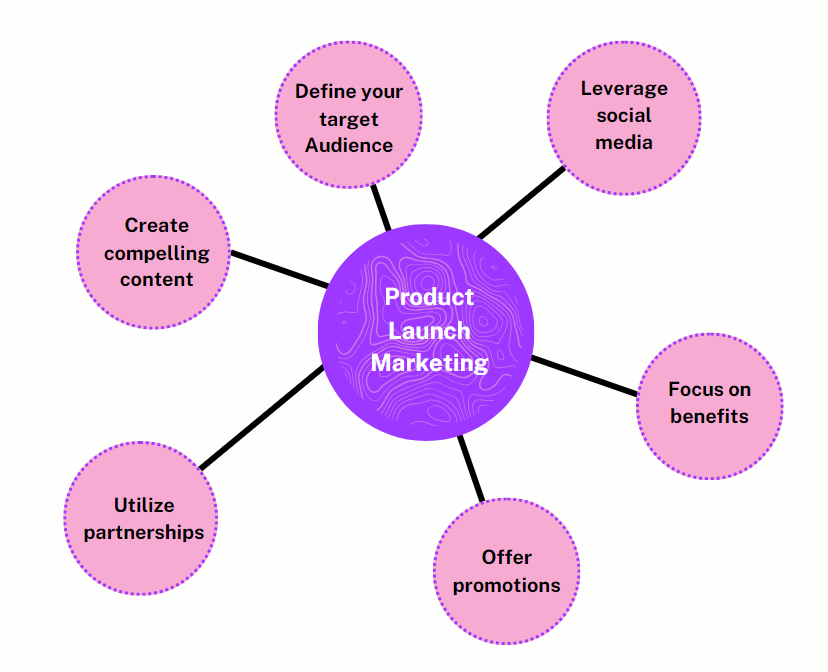A product launch can be intimidating for product managers and rightfully so. Everything you built so far is about to enter the market. A well-executed product launch is crucial to set the foundations for long-term product success.

In order to have an impactful launch, you need detailed planning, analysis of the market, and appropriate time management. Today, you’ll learn a few key recommendations for a flawless product launch procedure. As a product manager, your input in this phase cannot be overstated.
A product launch strategy serves as a blueprint to introduce a new product to the market. It includes guidance on all aspects related to a digital product from marketing, sales, customer education, to customer support.
The main goal of a launch strategy is to maximize initial impact. It builds anticipation, maximizes initial sales, and establishes a strong market presence early on.
Here are the key parts of a launch strategy:
A strategy lays a foundation for long-term objectives. It ensures that the product resonates with the target audience and achieves commercial objectives.
The product launch can be confusing as you’re introducing a new concept to the market. For the launch to go well, several factors need to be aligned and a strategy should be in place.
This framework acts as a starting point for product managers and can be customized depending on the product:
Each step within this framework is critical as it builds upon the last. A stepwise process gives you a structure to ensure cohesion. Without a structure, things can spiral out of control easily.
The product space is highly competitive. You need to adopt a marketing strategy that serves as a middle ground between proven and emerging practices.
When a product is marketed effectively, it aids in boosting initial adoption. Initial adoption matters a lot in the product lifecycle. There are seven tips to consider to market products the right way:

When you employ these marketing tips, it can significantly enhance the appeal of your product. After all, the goal of robust marketing is to lay down the basics for sustained success and presence in the targeted space.
Zoom became a household name almost overnight. It capitalized by providing a user-friendly interface and reliable service during the right time. The demand for virtual meeting solutions was sky high but many products lacked the focused approach that Zoom adopted. It provided value to every user through its:
The second example is Slack. It revolutionized workplace communication by strategically entering the market. Initially, its target was limited to purely tech-savvy companies and startups. One key strategy in their marketing strategy was how it utilized early adopters (as evangelists) to spread the word. If you analyze Slack, three elements stand out:
This template provides a structured approach for planning your product launch. It includes all the key elements of an ideal product launch strategy. It will help you maximize the impact of your new product in the market.
Use this checklist to guide your launch strategy:
Product definition
Market research
Target audience
Objectives and goals
Pricing strategy
Marketing and promotion plan
Sales and distribution strategy
Customer support and service
Launch timeline
Post-launch strategy
Contingency planning
This comprehensive template will ensure that every critical aspect of your product launch is catered to. As a product manager, you will lead several product launch cycles. You can customize the checklist based on your insights.
Launching a new product is an intricate process. If the strategy driving the launch has gaps, the process becomes plagued with numerous challenges. For product managers, this can prove costly as it burns company resources that could have been used otherwise.
The complications can range from poor market reception to logistical issues. Product-led businesses need to be prepared to handle obstacles. The coping strategy is equally important and can affect the success of a product launch.
Challenges in product launches are inevitable. But the good news is that they can be managed and overcome early in the process. The product launch strategy should be formulated after careful planning and thorough research.
As a product manager, you need to push the team to proactively resolve these issues. It saves effort, time, and sets the standard for the long run.
Launching a new product successfully is a complex and multi-faceted endeavor. It requires careful planning and strategic execution. As a product manager, you’re expected to understand and implement the best practices in every phase of product launch.
The following key tips will prove useful for your journey:
Featured image source: IconScout
LogRocket identifies friction points in the user experience so you can make informed decisions about product and design changes that must happen to hit your goals.
With LogRocket, you can understand the scope of the issues affecting your product and prioritize the changes that need to be made. LogRocket simplifies workflows by allowing Engineering, Product, UX, and Design teams to work from the same data as you, eliminating any confusion about what needs to be done.
Get your teams on the same page — try LogRocket today.

Red-teaming reveals how AI fails at scale. Learn to embed adversarial testing into your sprints before your product becomes a headline.

Cory Bishop talks about the role of human-centered design and empathy in Bubble’s no-code AI development product.

Learn how to reduce mobile friction, boost UX, and drive engagement with practical, data-driven strategies for product managers.

Jim Naylor shares he views documentation as a company’s IP and how his teams should use it as a source of truth.